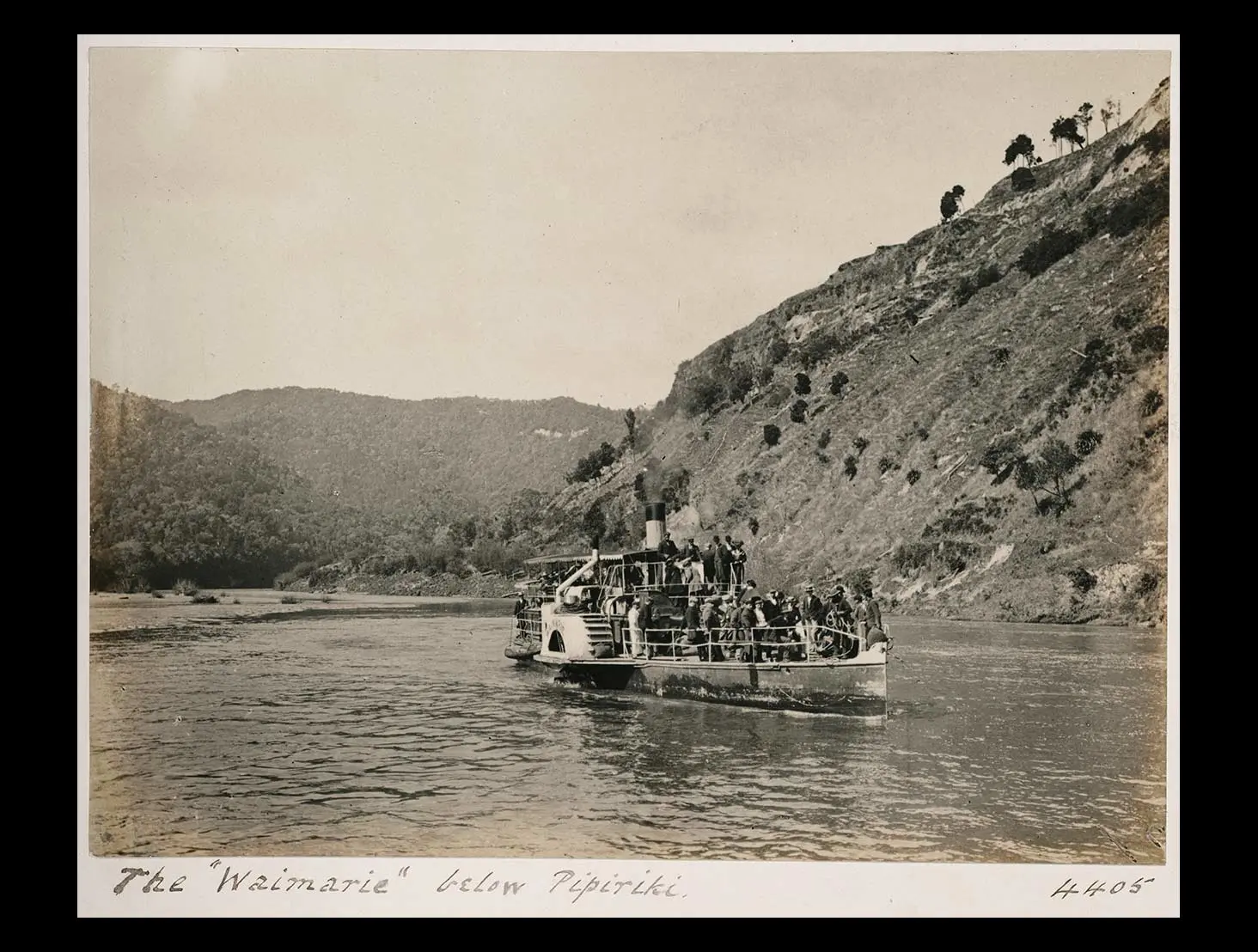E rere kau mai te awa nui nei
Mai i te kāhui maunga ki Tangaroa
Ko au te awa
Ko te awa ko au.
The great river flows
From the mountains to the sea
I am the river
The river is me.
In 1899, a new paddle steamer in kitset form arrived from England in Whanganui, where it was assembled and launched to go into service on the Whanganui River. Originally called Aotea, the steamer was renamed Waimarie (meaning ‘good fortune, peaceful waters’) in 1902 when merchant Alexander Hatrick (1857–1918) bought it for his river shipping company. The name was slightly ironic, given that during the journey along the river the Waimarie had to navigate some 239 rapids.
At the time the Whanganui River was experiencing a surge in popularity with tourists, with newspaper advertisements describing the river as ‘the Rhine of Maoriland’. The Waimarie carried visitors to and from popular tourist sites such as Pipiriki and Hipango Park, as well as cargo such as sheep and wool, and operated a mail and passenger service for the river’s settlements. The steamer’s especially shallow draught was ideal for navigating the rapids. By 1935, however, the Whanganui River Road had opened, greatly reducing the need for a steamer service and the Waimarie ceased operating in 1949. In 1952, it sank at its mooring, where it remained for 40 years.
During the half-century in which the Waimarie had sailed the Whanganui River, the tourism industry had boomed. But, in another irony, the waters of relationships between local Pākehā and iwi were not peaceful. The presence of shipping on the river had destroyed iwi fisheries, and ownership over the river and the surrounding land had become contested.
Several attempts were made to restore iwi ownership over the Whanganui River during the twentieth century, the earliest of these being in 1938 through the Maori Land Court. In 1994, the Waitangi Tribunal claim Wai 167 was heard, and the Whanganui River Report was published in 1999. This report affirmed the te reo version of Te Tiriti o Waitangi as guaranteeing the rangatiratanga of iwi. The Te Awa Tupua (Whanganui River Claims Settlement) Act 2017 conferred personhood on the Whanganui River. This granted the river the same rights as a person in acknowledgement of its substantial role and significance in te ao Māori, and brought protection of the river’s spiritual and physical health through community responsibility.
In the 1990s, the restoration of the Waimarie became Whanganui’s official millennium project. At 11.45 p.m. on 31 December 1999, a hundred years after the steamer was built, the newly reincarnated Waimarie was blessed with a karakia and set sail once more to carry visitors along the Whanganui River. The ‘River Queen’ has endured to become a symbol of the region’s tourism industry once again.
Story written by: Amanda Sykes
Copyright: Turnbull Endowment Trust
Find out more
Read connected stories from Te Kupenga:
Explore the Alexander Turnbull Library collections further:
He Tohu has Change-maker — the Whanganui River.
Papers Past has:
Many Answers has Rivers (New Zealand).
Want to share, print or reuse one of our images? Read the guidelines for reusing Alexander Turnbull Library images.
Curriculum links
